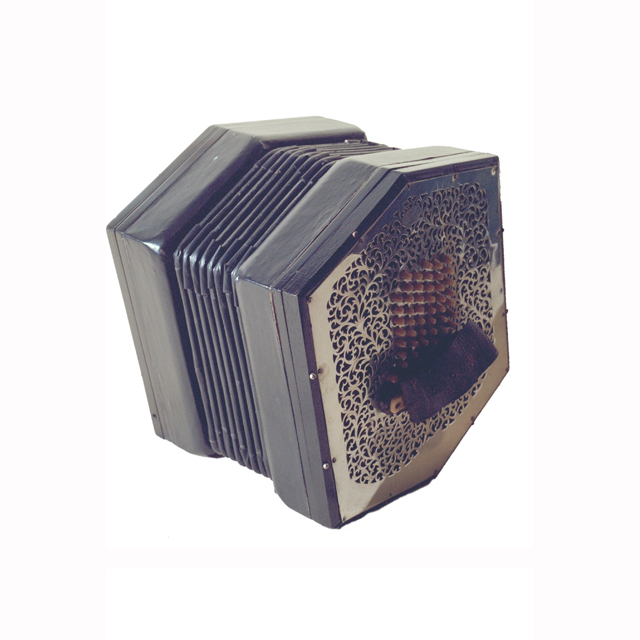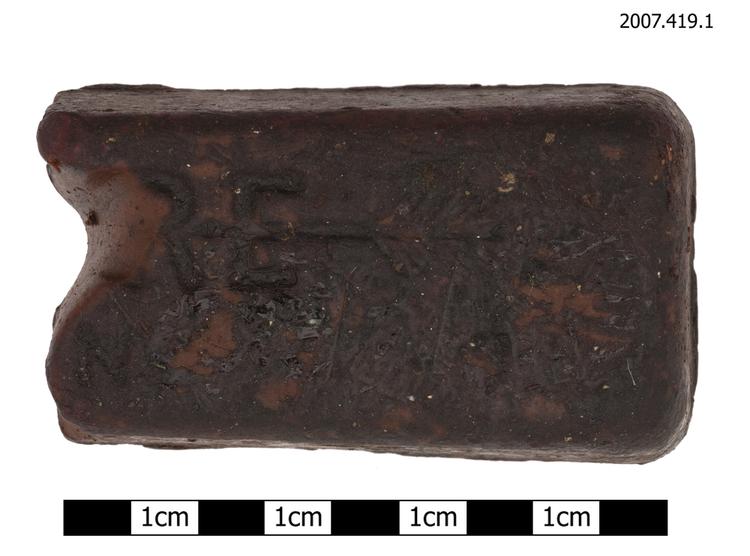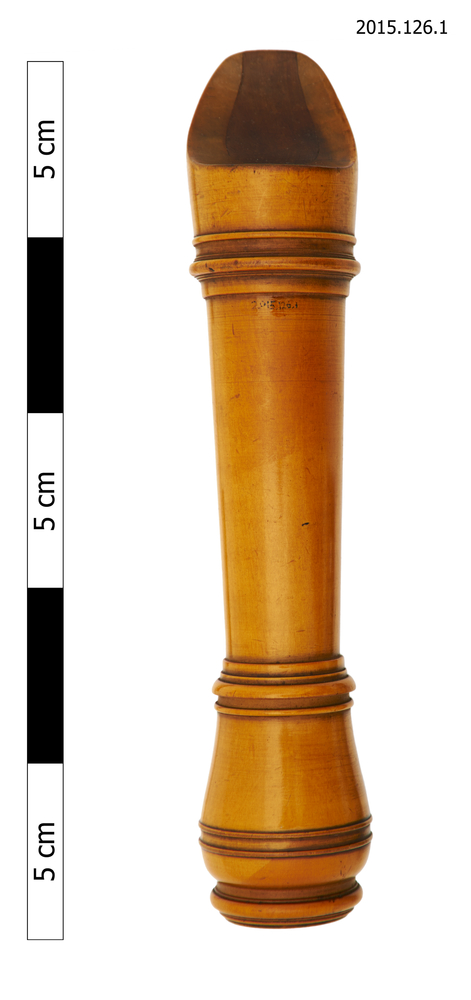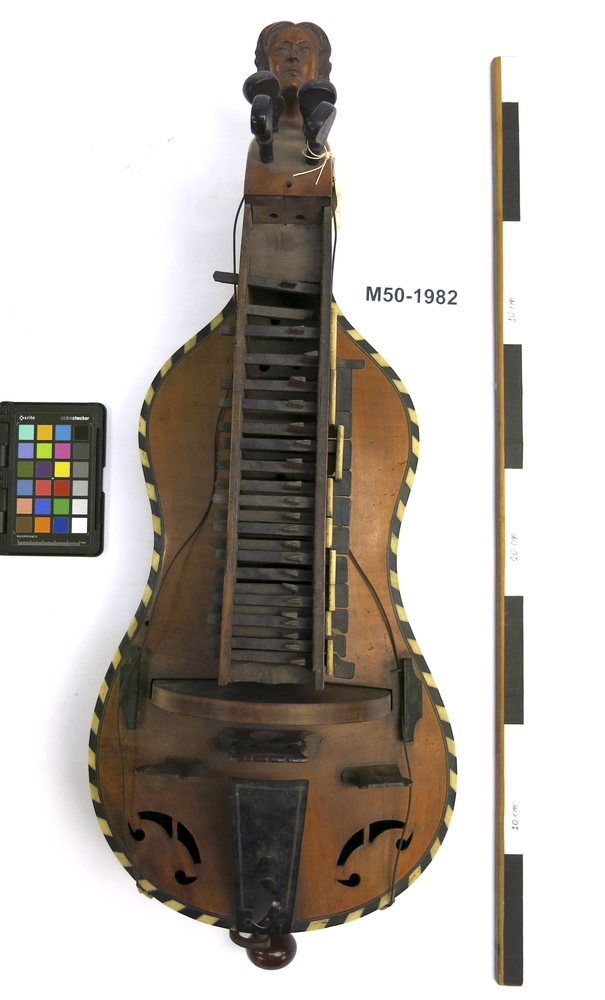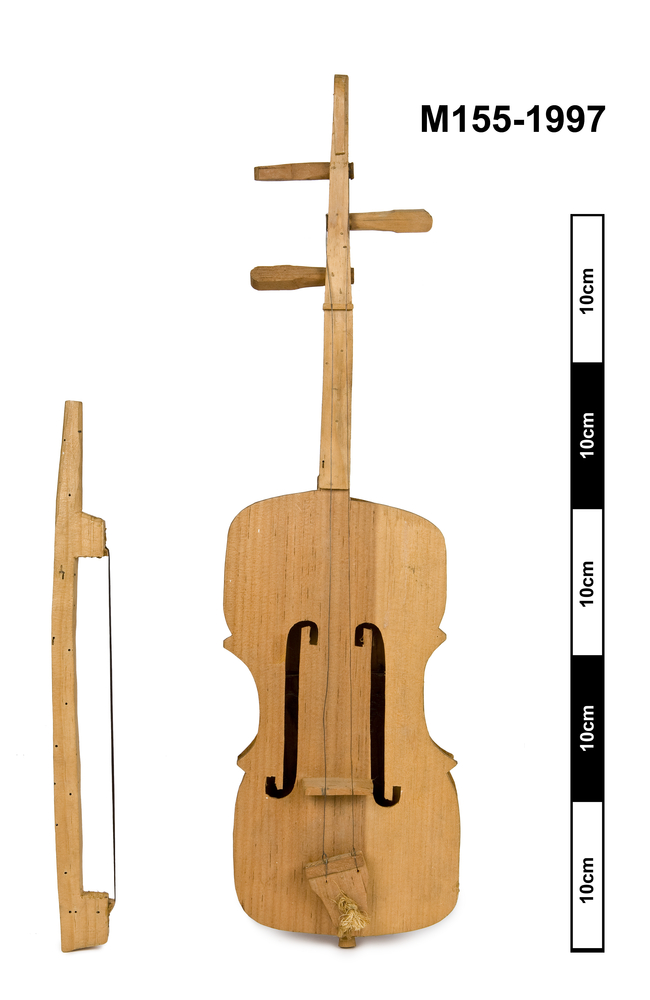


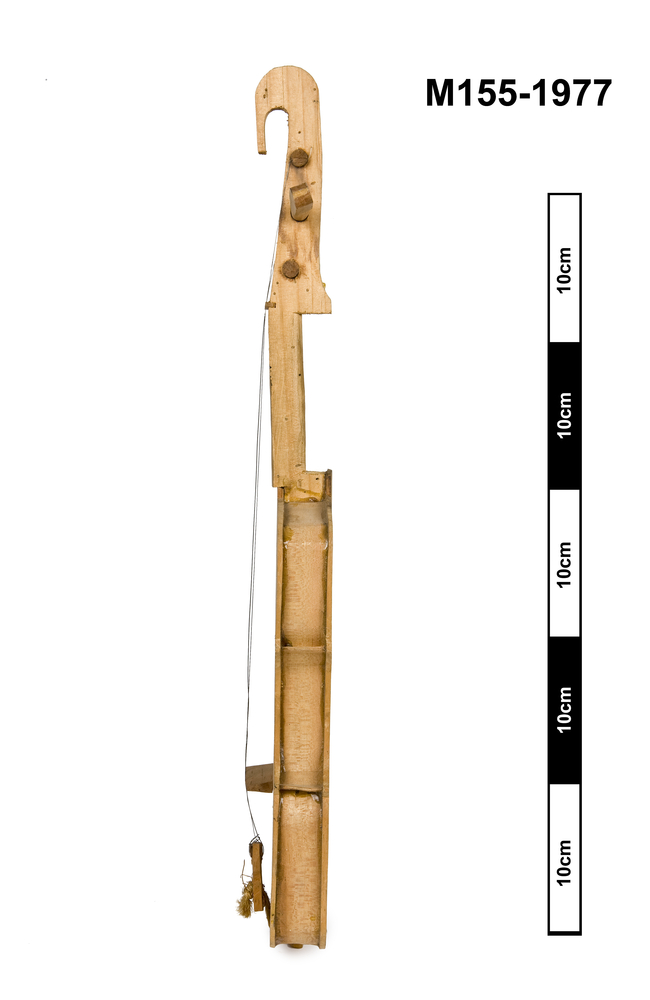
Fiddle. The body is made in a squared and asymmetrical version of a violin shape. The plates are flat, and there are two large S-shaped sound-holes. Two strands of rush (?) are glued to the inside, opposite the sound-holes. No separate fingerboard. The neck and peg-box are made of one piece of wood, which has been attacked by boring beetle - the tunnels are plugged with splinters of wood. The peg-box terminates in a hook. Three pegs, of which only two can be used. The wire strings sit in slots in the ends of the pegs which pass through the solid head. There is no slot in the lowest peg. A separate nut has two grooves for strings. The bridge consists of a roughly rectangular block of wood, trimmed at the bottom, so that it inclines towards the tailpiece. The tailpiece, which is pierced for three strings, is attached by a string to a button on a block glued to the ribs. The ribs have split at the spot where the block is glued. The bow is also of wood marked by beetles, although the holes have not been plugged. A rectangular block of wood has been pared down at one end to form a handle, and a section is cut for about 3/5 of the total length, leaving two blocks to which the hair is glued. The hair is attached at both ends by a dowel inserted into a hole, it then passes over a block.



